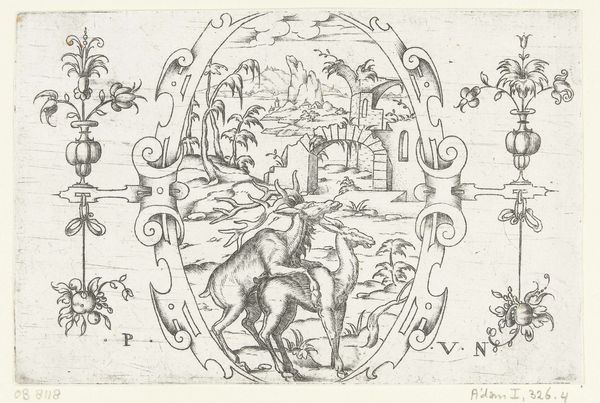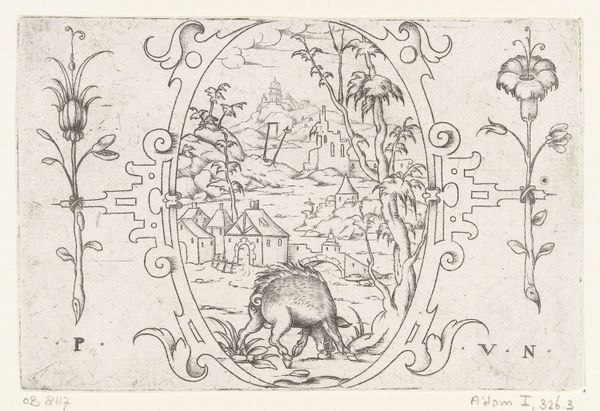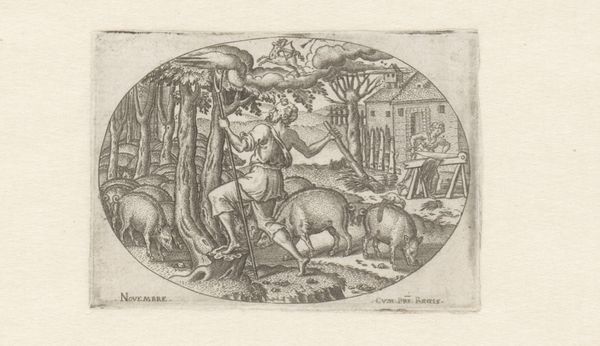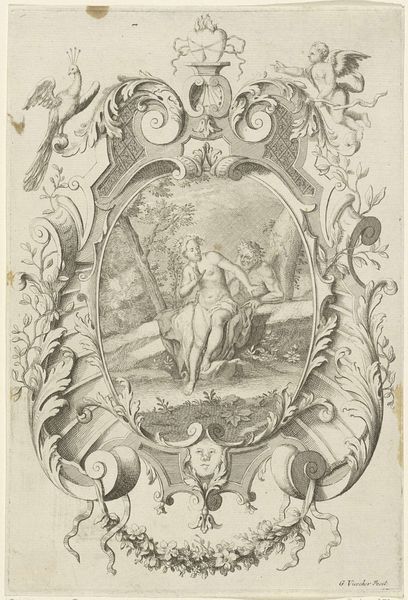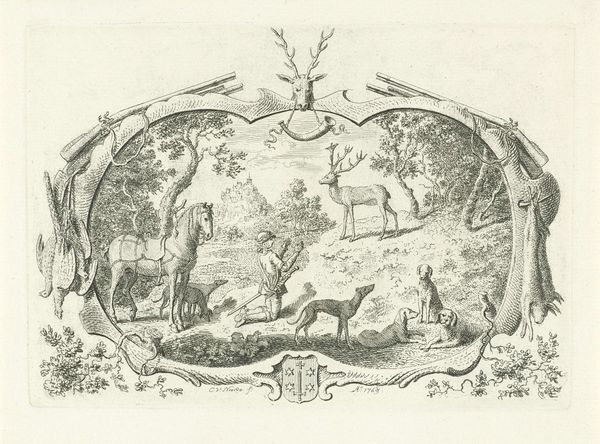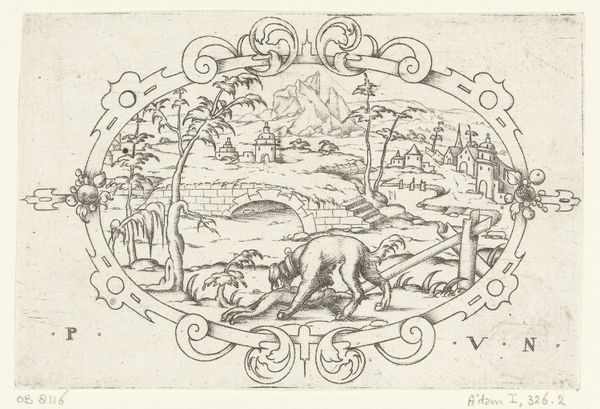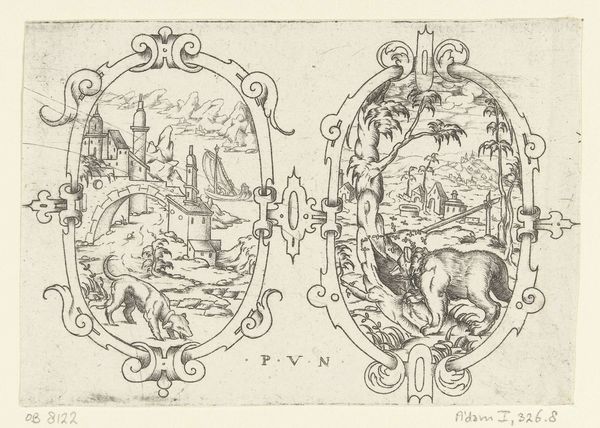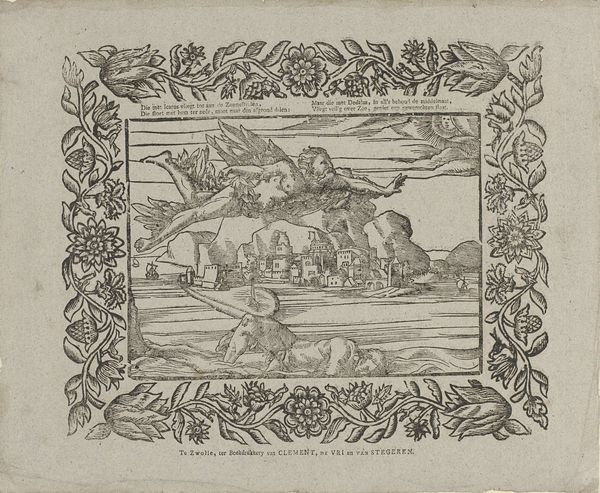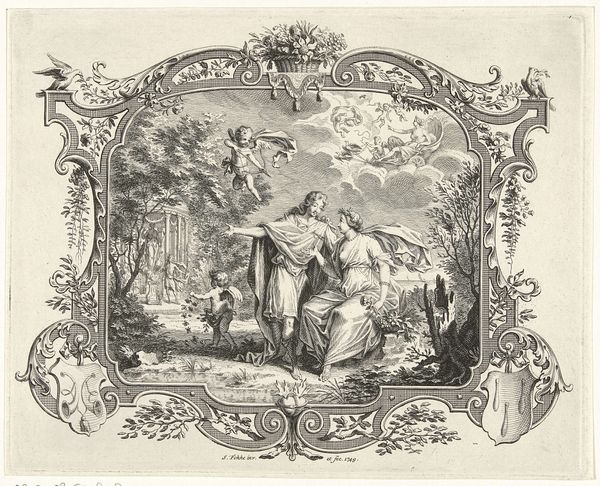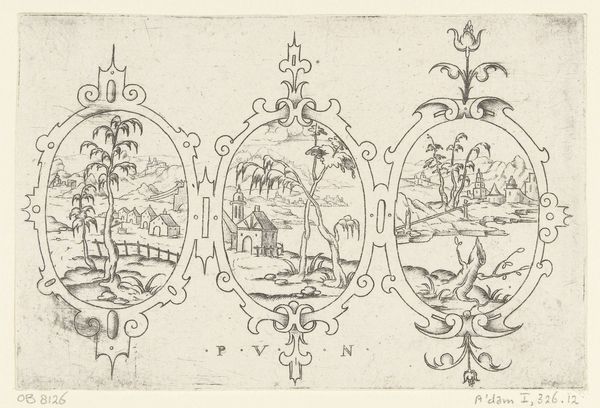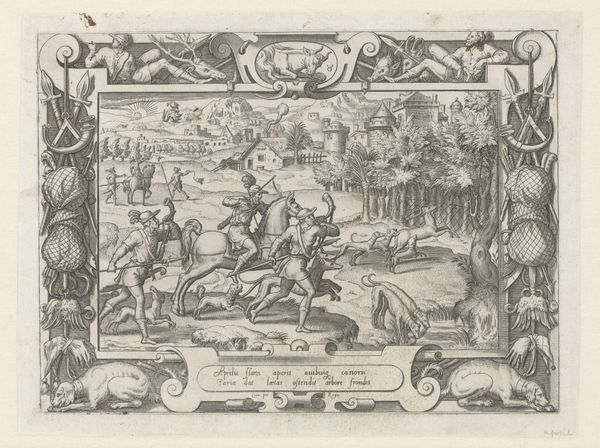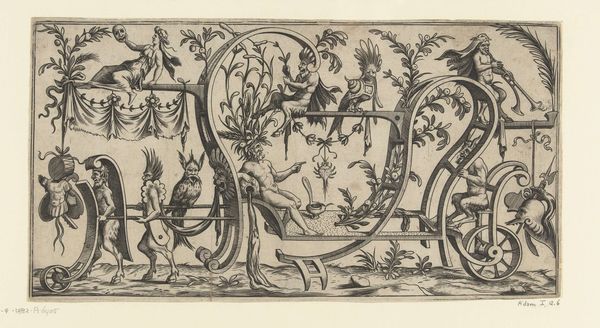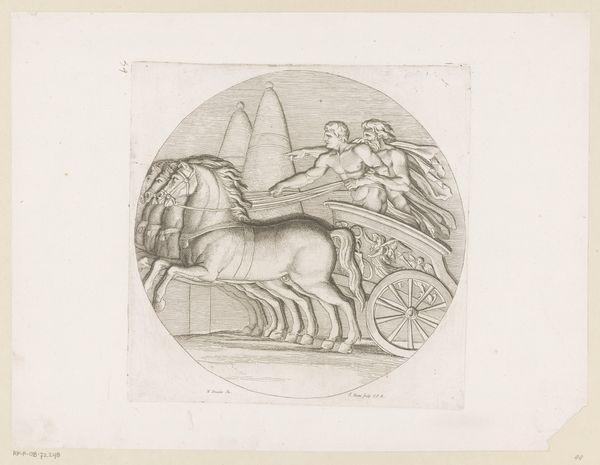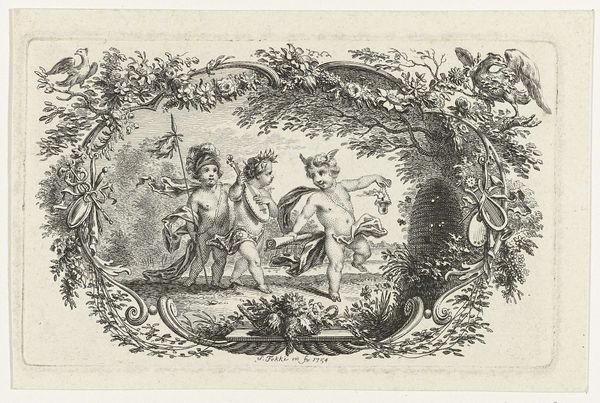
print, engraving
#
allegory
#
baroque
# print
#
landscape
#
figuration
#
engraving
Dimensions: height 100 mm, width 140 mm
Copyright: Rijks Museum: Open Domain
This etching showing a reclining unicorn in an oval frame was created by Paul Flindt in the late 16th or early 17th century in the Netherlands. The image evokes a sense of the exotic and mythological, connecting to the broader cultural fascination with rare and wondrous creatures in that period. The unicorn itself is a powerful symbol of purity and grace, often associated with religious or aristocratic power. In a time of increasing global trade, images like this reflected a growing awareness of the world beyond Europe, even as they blended reality with fantasy. The work also alludes to the rise of powerful, centralized states. How were their values reflected in courtly art and heraldry, and how did it impact the cultural and political landscape of the time? To truly understand the art of this period, scholars often turn to historical texts, emblem books, and archival records that shed light on the beliefs and values of the people who created and consumed these images. The meaning of any work of art can be understood through the social and institutional context.
Comments
No comments
Be the first to comment and join the conversation on the ultimate creative platform.
